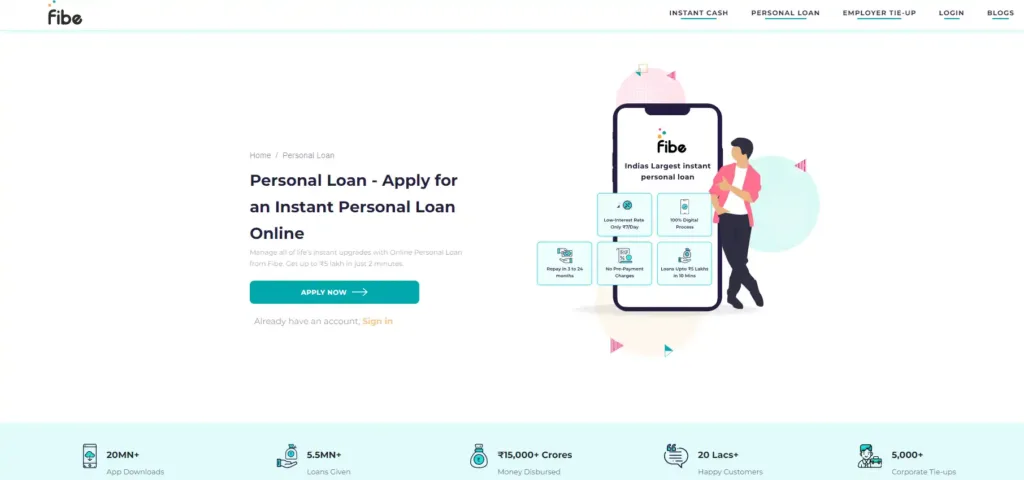
Is home loan insurance really worth your money? Discover the shocking truths about mortgage protection plans – from hidden clauses to better alternatives. Learn when it’s essential protection and when it’s a waste of money. Don’t sign until you read this!
Buying a home is a significant milestone for many Indian professionals, often marking a major financial and emotional investment. With the rising cost of real estate in cities like Mumbai, Bangalore, and Delhi, most buyers rely on home loans to turn their dream of homeownership into reality. However, a home loan comes with long-term financial responsibilities, and unforeseen events like death, disability, or job loss can disrupt repayment plans. This is where home loan insurance, also known as a Home Loan Protection Plan (HLPP) or mortgage loan insurance, comes into play. But is home loan insurance worth it? This blog post explores the importance, benefits, costs, and key considerations of home loan insurance in India, using the latest data to help you make an informed decision.
What Is Home Loan Insurance?
Home loan insurance is a specialized insurance product designed to protect borrowers and their families from the financial burden of repaying a home loan in case of unforeseen circumstances. Unlike home insurance, which covers damages to the property due to events like fire, floods, or theft, home loan insurance ensures that the outstanding loan amount is paid off if the borrower faces events such as death, critical illness, or permanent disability. The policy typically covers the remaining loan balance, ensuring that the family does not lose the home or face financial hardship.
The coverage period of a home loan insurance plan usually matches the loan tenure, which can range from 10 to 30 years. Most plans are single-premium policies, meaning you pay the premium upfront, though some insurers allow the premium to be bundled with the loan amount and repaid through Equated Monthly Instalments (EMIs).
Key Features of Home Loan Insurance
- Purpose: Clears the outstanding loan balance in case of the borrower’s death, disability, or job loss.
- Coverage Duration: Aligns with the home loan tenure (e.g., 20 years for a 20-year loan).
- Premium Structure: Typically a one-time premium, which can be added to the loan amount or paid separately.
- Add-On Covers: Many plans offer riders for critical illness, permanent disability, or job loss.
- Tax Benefits: Premiums may qualify for tax deductions under Section 80C of the Income Tax Act, though this does not apply if the premium is included in the loan EMI.
Why Consider Home Loan Insurance in India?
For Indian professionals, particularly those in high-pressure jobs or with dependents, home loan insurance offers a safety net. Here are the primary reasons why it’s worth considering:
1. Protects Your Family from Financial Burden
The untimely death of the primary breadwinner can leave families struggling to repay a home loan, potentially leading to foreclosure and loss of the home. Home loan insurance ensures that the outstanding loan is settled, sparing your family from financial distress during a difficult time. For example, if you have a ₹50 lakh loan and pass away after repaying ₹10 lakh, the insurer will cover the remaining ₹40 lakh, ensuring your family retains ownership of the home.
2. Safeguards Lenders’ Interests
Banks and Non-Banking Financial Companies (NBFCs) face the risk of loan defaults, which can lead to significant losses. Home loan insurance reduces this risk by guaranteeing that the outstanding loan amount is paid, even if the borrower is unable to continue repayments. This makes lenders more likely to approve loans and may even result in better loan terms for borrowers who opt for insurance.
3. Covers Unforeseen Circumstances
Beyond death, many home loan insurance plans offer add-on covers for critical illnesses (e.g., cancer, heart attack) or permanent disability, which can impair your ability to earn and repay the loan. Some policies also include job loss coverage, which is particularly relevant in today’s uncertain economic climate. For instance, with layoffs reported in sectors like IT and startups in 2024, job loss coverage can provide temporary relief by covering EMIs for a specified period.
4. Tax Benefits
Premiums paid for home loan insurance may qualify for tax deductions under Section 80C, up to ₹1.5 lakh per year, provided the premium is paid separately and not bundled with the loan EMI. This can reduce your taxable income, making the policy more cost-effective.
5. Peace of Mind
Knowing that your family won’t face the burden of repaying a hefty loan in your absence provides invaluable peace of mind. This is especially critical for Indian professionals who are often the sole or primary earners in their households.
Is Home Loan Insurance Mandatory?
No, home loan insurance is not mandatory in India, as per regulations from the Reserve Bank of India (RBI) and the Insurance Regulatory and Development Authority of India (IRDAI). However, some lenders may encourage or indirectly require it by including it in the loan agreement. Borrowers have the freedom to choose their insurer and are not obligated to buy the policy offered by the lender. Comparing plans from multiple insurers can help you find a cost-effective option that suits your needs.
Costs of Home Loan Insurance in India
The cost of home loan insurance depends on several factors, including:
- Loan Amount: Higher loan amounts result in higher premiums, as the insurer’s liability increases.
- Loan Tenure: Longer tenures typically lead to higher premiums due to prolonged risk exposure.
- Borrower’s Age and Health: Younger, healthier borrowers pay lower premiums, as they pose a lower risk to insurers.
- Add-On Covers: Riders for critical illness or job loss increase the premium.
For example, for a ₹50 lakh loan with a 20-year tenure, the premium for a healthy 30-year-old borrower might range from ₹1.5 lakh to ₹3 lakh as a one-time payment. If bundled with the loan, this premium is added to the loan amount (e.g., ₹52 lakh), increasing the EMI slightly.
Is It Cost-Effective?
To determine if home loan insurance is worth it, consider the following:
- Financial Dependents: If you have a spouse, children, or aging parents who rely on your income, the insurance can prevent them from inheriting a financial burden.
- Loan Tenure and Amount: For large loans with long tenures (e.g., 20–30 years), the risk of unforeseen events is higher, making insurance more valuable.
- Health and Job Stability: If you have pre-existing health conditions or work in a volatile industry, the additional coverage for disability or job loss can be beneficial.
- Cost vs. Benefit: Compare the premium cost to the loan amount and your family’s financial situation. For a ₹50 lakh loan, a ₹2 lakh premium (4% of the loan) may be justified if it ensures your family’s security.
Key Considerations Before Buying Home Loan Insurance
Before saying yes to home loan insurance, Indian professionals should evaluate the following:
1. Compare Policies
Not all home loan insurance plans are the same. Compare policies from insurers like LIC, HDFC Ergo, and IndiaFirst Life for premium costs, coverage, and add-ons. Online platforms like Policybazaar and Bankbazaar can simplify this process.
2. Understand Exclusions
Read the policy terms carefully to understand exclusions. For example, some policies may not cover death due to pre-existing conditions or suicide within the first year. Ensure the policy aligns with your needs.
3. Check Premium Payment Options
Decide whether you want to pay the premium upfront or include it in the loan amount. Paying upfront may qualify you for tax benefits, while bundling it with the loan increases your EMI but spreads the cost.
4. Evaluate Add-On Covers
If you’re in a high-risk job or have health concerns, consider riders for critical illness or job loss. These can enhance the policy’s value but will increase the premium.
5. Assess Your Existing Insurance
If you already have a term life insurance policy with adequate coverage (e.g., 10–15 times your annual income), you may not need separate home loan insurance. A term plan can cover the loan and other financial liabilities, offering broader protection.
6. Consider Alternatives
Instead of home loan insurance, you could opt for a term insurance plan with a higher sum assured to cover the loan and other expenses. For example, a ₹1 crore term plan for a 30-year-old might cost ₹10,000–₹15,000 annually, offering more comprehensive coverage than a home loan insurance plan.
Term Insurance vs. Home Loan Insurance: A Detailed Comparison
To help Indian professionals make an informed decision, below is a comprehensive comparison of Term Insurance and Home Loan Insurance in a table format, highlighting key differences, benefits, and considerations based on the latest data and trends in India.
| Parameter | Term Insurance | Home Loan Insurance |
| Definition | A life insurance policy that provides coverage for a specified term, paying a sum assured to nominees upon the policyholder’s death. | A specialized insurance plan that covers the outstanding home loan amount in case of the borrower’s death, disability, or job loss. |
| Purpose | Provides financial security to the family for various needs (e.g., living expenses, loans, education) in case of the policyholder’s death. | Specifically clears the outstanding home loan amount to prevent foreclosure and protect the family’s home. |
| Coverage Scope | Broad coverage, with the sum assured available for any financial need, including home loans, debts, or other expenses. | Limited to the outstanding home loan amount, ensuring the home is debt-free for the family. |
| Sum Assured | Fixed sum assured (e.g., ₹1 crore), chosen based on income and financial goals (typically 10–15 times annual income). | Decreasing coverage tied to the outstanding loan amount, which reduces as EMIs are paid. |
| Premium Cost | Relatively lower. For example, a ₹1 crore term plan for a 30-year-old may cost ₹10,000–₹15,000 annually (2024 data). | Higher, as it’s a single-premium policy. For a ₹50 lakh loan, the premium may range from ₹1.5 lakh to ₹3 lakh upfront. |
| Premium Payment Options | Flexible: Annual, semi-annual, quarterly, or monthly payments. | Usually a one-time premium, which can be paid upfront or bundled with the loan, increasing the EMI. |
| Policy Tenure | Flexible, ranging from 10 to 40 years or until a specified age (e.g., 65 or 80). | Matches the home loan tenure (e.g., 10–30 years). |
| Add-On Covers | Riders available for critical illness, accidental death, disability, or premium waiver. | Riders for critical illness, permanent disability, or job loss (e.g., EMI coverage for 3–6 months). |
| Tax Benefits | Premiums qualify for tax deductions under Section 80C (up to ₹1.5 lakh) and payouts are tax-free under Section 10(10D). | Premiums may qualify for tax deductions under Section 80C if paid separately, but not if bundled with loan EMI. |
| Maturity Benefits | No maturity benefits; payout only on the policyholder’s death during the term. | No maturity benefits; coverage is only for the loan amount during the policy term. |
| Exclusions | Common exclusions include suicide within the first year, death due to hazardous activities, or pre-existing conditions (if undisclosed). | Similar exclusions, plus specific conditions like pre-existing illnesses or job loss due to voluntary resignation. |
| Flexibility | Highly flexible; the sum assured can be used for any purpose, including home loans, education, or other debts. | Limited flexibility; coverage is restricted to the home loan and cannot be used for other purposes. |
| Mandatory Requirement | Not mandatory; purely a personal choice based on financial planning needs. | Not mandatory, but some lenders may encourage it as part of the loan agreement. |
| Suitability | Ideal for professionals seeking comprehensive life cover to secure their family’s financial future. | Suitable for home loan borrowers with dependents, especially if no other life insurance exists. |
| Overlap Consideration | A term plan with a high sum assured (e.g., ₹1 crore) can cover a home loan and other liabilities, potentially eliminating the need for home loan insurance. | May be redundant if a term plan already covers the loan amount, as it’s less flexible and costlier. |
| Market Trends (2024–2025) | Term insurance penetration is growing, with online platforms like Policybazaar reporting a 20% rise in term plan purchases among young professionals. | Home loan insurance uptake is increasing due to rising home loan disbursals (projected CAGR of 13.9% for the home loan market until 2030). |
| Example Scenario | A 30-year-old with a ₹50 lakh loan and ₹1 crore term plan can use the payout to clear the loan and support other expenses. | For the same ₹50 lakh loan, home loan insurance clears only the outstanding loan, leaving no additional funds for the family. |
Latest Data and Trends (2024–2025)
According to recent data, the Indian home loan market is projected to grow at a CAGR of 13.9% from 2023 to 2030, driven by urbanization and rising disposable incomes. However, economic uncertainties, including layoffs in sectors like IT (with over 20,000 job cuts reported in 2024), highlight the need for financial protection like home loan insurance. Additionally, natural calamities like floods and cyclones, which affected over 2 million homes in India in 2024, underscore the importance of securing both the property (via home insurance) and the loan (via home loan insurance).
The insurance penetration rate in India remains low at 4.2% (as of 2023), indicating a lack of awareness about products like home loan insurance. However, with increasing digital adoption, online insurance platforms have made it easier to compare and purchase policies, driving uptake among young professionals.
Pros and Cons of Home Loan Insurance
Pros
- Protects family from loan repayment burden
- Reduces lender’s risk, potentially improving loan terms
- Offers add-on covers for disability and job loss
- Provides tax benefits under Section 80C
- Ensures peace of mind for borrowers
Cons
- Increases overall loan cost due to premium
- No maturity benefits, as the policy is designed to cover the loan only
- May overlap with existing term insurance
- Exclusions and fine print can limit coverage
Is It Worth It for Indian Professionals?
For Indian professionals, the decision to buy home loan insurance depends on your financial situation, risk profile, and existing insurance coverage. If you’re a young professional with a large loan, dependents, and no other life insurance, home loan insurance can be a worthwhile investment. It ensures your family’s financial stability and protects your home from foreclosure. However, if you have a robust term insurance plan or a short-term loan, you may not need a separate HLPP.
Final Thought
Home loan insurance is a valuable tool for safeguarding your family and investment, but it’s not a one-size-fits-all solution. By understanding its features, costs, and alternatives, you can make an informed decision that aligns with your financial goals. For Indian professionals navigating the complexities of homeownership, home loan insurance offers peace of mind, but careful evaluation is key. Before saying yes, weigh the costs against the benefits, compare plans, and ensure you’re not duplicating coverage with existing insurance.
Have you considered home loan insurance for your home loan? Share your thoughts or questions in the comments below, and let us help you secure your financial future!
















































